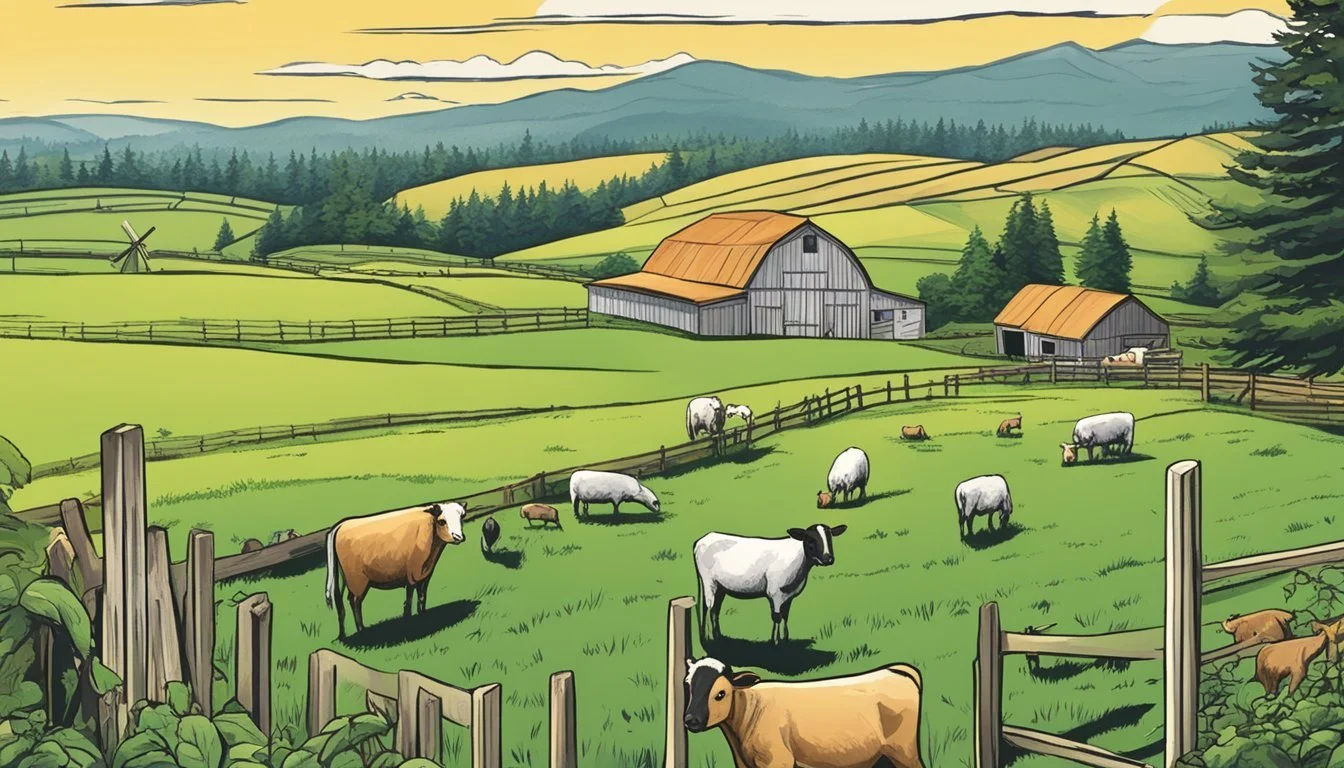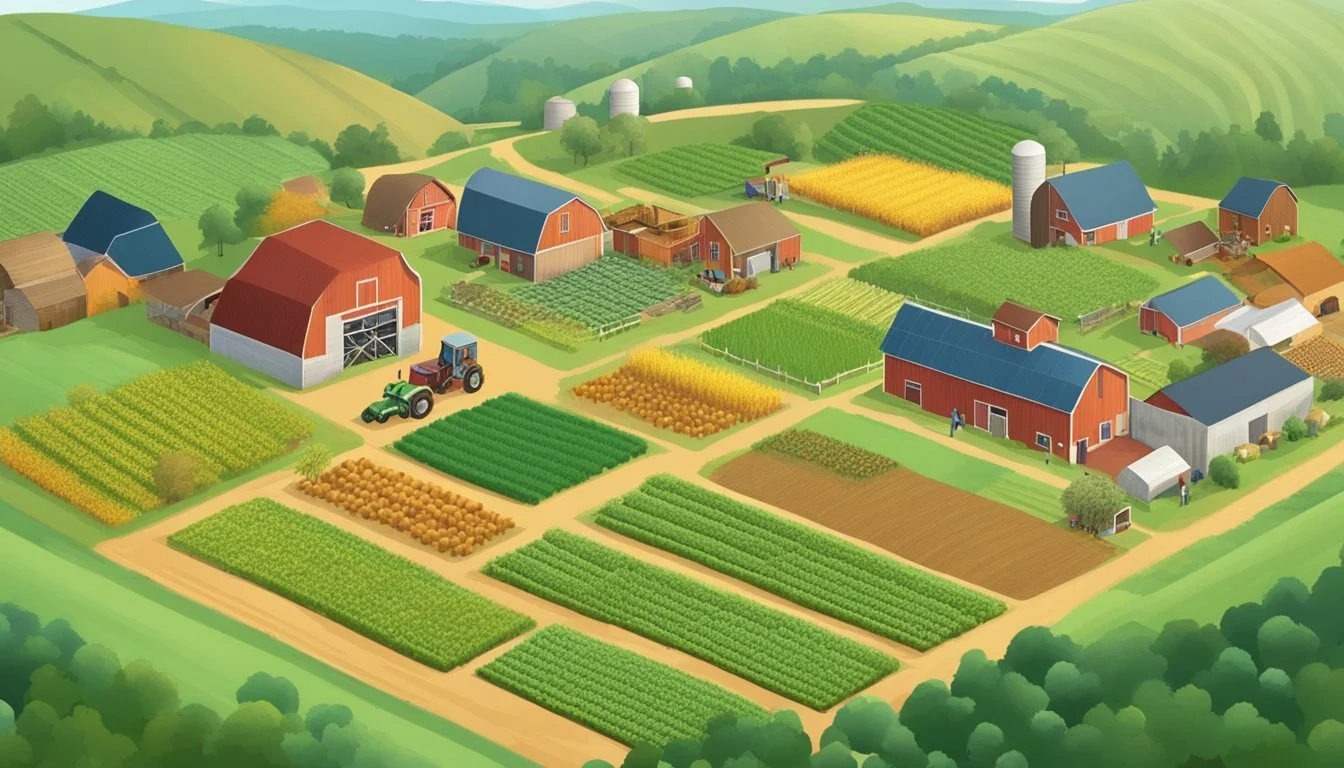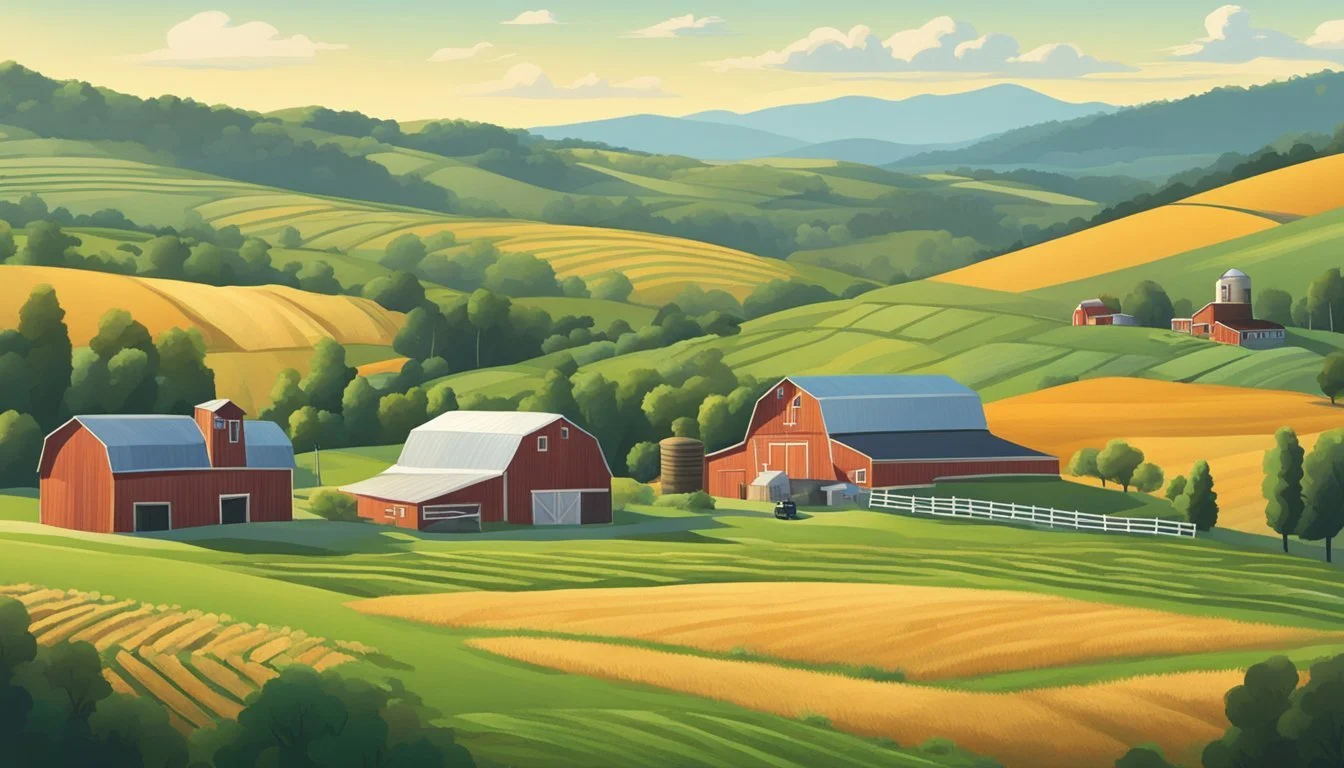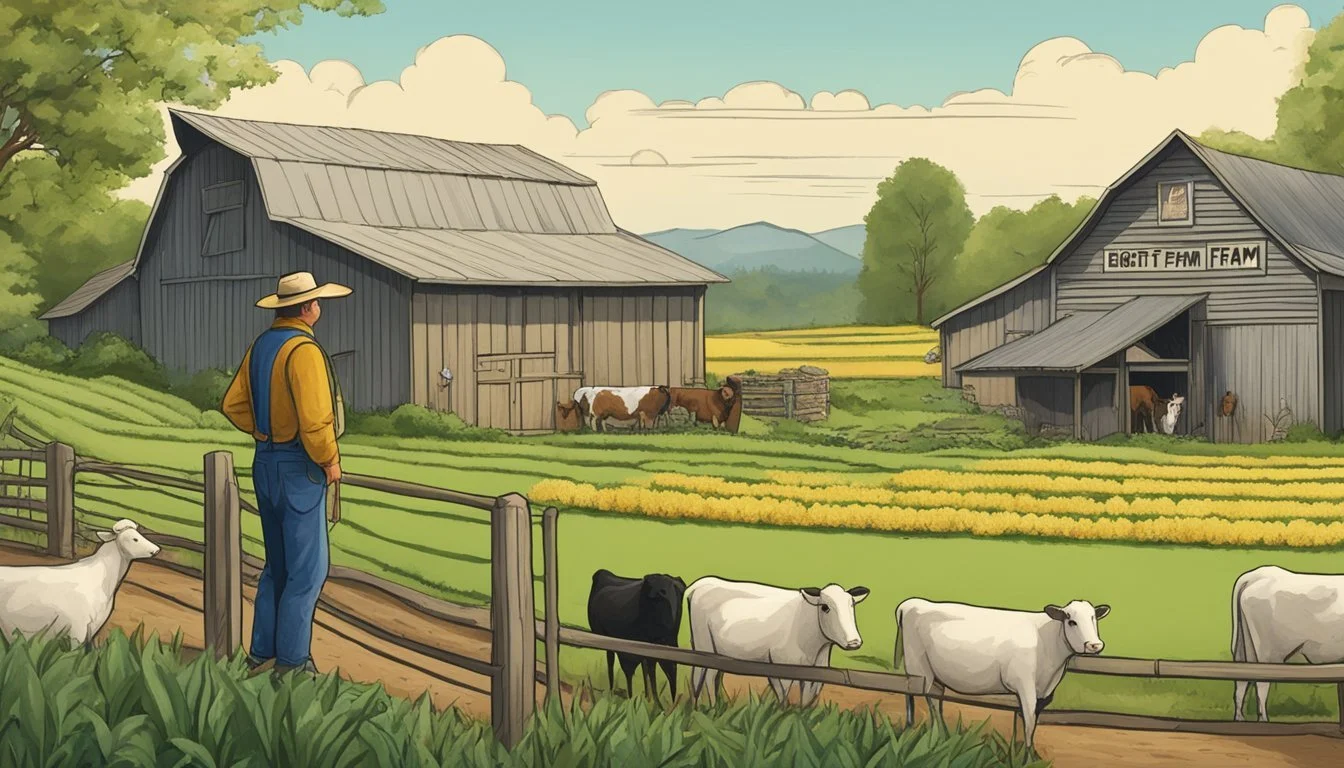Right to Farm Law in Oregon
Understanding Agricultural Protections
The Right to Farm Law in Oregon establishes legal protections for agricultural operations in the state. It serves as a shield for farmers and ranchers, safeguarding their ability to carry out regular agricultural and farming activities without the threat of nuisance lawsuits. This statute essentially acknowledges the importance of agriculture to the state's economy and way of life by providing farmers with the right to farm, given that their practices are consistent with good agricultural practices and established prior to surrounding non-agricultural land uses.
Oregon's commitment to agriculture is exemplified by the Right to Farm Law, indicating a legislative intent to preserve and maintain agricultural lands. The law minimizes conflicts between agricultural and non-agricultural land uses through its protections. Even with these protections in place, the law encourages farmers and ranchers to adopt conflict prevention and resolution strategies to maintain amicable relationships with their neighbors.
The relevance of this law is underscored by the state's diverse agricultural output, which ranges from livestock to various crops, including the Christmas tree industry. As urban and suburban areas expand, the Right to Farm Law plays a critical role in ensuring that Oregon's agricultural heritage persists, balancing the rights of farmers with the expectations of Oregon's broader community.
Historical Context
The Right to Farm Law in Oregon has its roots in policies tailored to safeguard farming practices and land use. It represents a legislative response to the pressures of urban development on agricultural areas.
Legislation Milestones
Oregon's Right to Farm Law was established in 1981 with the intent to protect agricultural lands from the encroachment of urban and suburban expansion. Critical amendments to the legislation were made in 1993 and 1995. These amendments reinforced the law's purpose and addressed emerging concerns of judicial interpretation and land use conflicts. In 2001, Oregon legislators made further adjustments to fine-tune the legislation, ensuring that it remained relevant to the evolving needs of the Oregon economy and its agricultural sector.
1981: Enactment of the original Right to Farm Law
1993: First significant amendment to the legislation
1995: Additional modifications to strengthen legal protections
2001: Subsequent adjustments in response to legal and economic developments
Agricultural Landscape Evolution
Since the law's inception, Oregon's agricultural landscape has witnessed modest growth in the number of farm operations, estimated at around 2 percent, demonstrating an active and persistent farming presence. However, this was juxtaposed with a decrease in farmland acreage by 13 percent, hinting at a consolidating industry or loss of farmable land, possibly due to various economic pressures and urban sprawl.
Growth in Farm Operations: Approximately +2%
Decrease in Farmland Acreage: Roughly -13%
Oregon legislators have keenly observed these changes and have strived to strike a balance between growth and preservation within the state’s vibrant agricultural economy.
Key Provisions of the Law
The Right to Farm Law in Oregon establishes legal protections for agricultural operations. It is designed to shield farmers and foresters from nuisance claims, precisely define the scope of farm operations, and protect certain land uses.
Protection from Nuisance Suits
Under Oregon statute ORS 30.935, farm and forest practices on land zoned for farm or forest use are immune from private legal actions claiming nuisance or trespass. This legal protection applies provided that the practices are consistent with generally accepted agricultural and forestry management practices.
Nuisance: No filing of private rights of action or claims for relief.
Applicability: Applies to lands zoned for farm or forest use.
Definition of Farm Operations
As per ORS 30.930, a "farm" encompasses facilities, including land, buildings, watercourses, and related components, used for commercial production of a wide array of agricultural products. These include crops, nursery stock, livestock, poultry, and their respective products.
Inclusion: Production facilities for crops, livestock, and products such as vermiculture and nursery stock.
Commercial Production: The operation must be engaged in commercial activities.
Exclusive Farm Use Zones
The law prohibits local governments from passing regulations that declare farming or forestry practices a nuisance or trespass within Exclusive Farm Use Zones. ORS 30.936(1) asserts immunity from private action for farm and forest practices within these zones.
Immunity: Acknowledged in zones designated for exclusive farm or forest use.
Protection of Agricultural Land: Preserved for agricultural practices; land use regulations are constrained.
Applicability and Limitations
Oregon's Right to Farm (RTF) Law designates agricultural activity on zoned lands as generally protected from nuisance or trespass suits, while outlining exceptions and considering the interactions of urban and rural areas.
Urban and Rural Interactions
The law recognizes the Urban Growth Boundary (UGB), a region designed to contain urban development. Agricultural practices within areas zoned for farm use or within the UGB are typically shielded against legal actions that may arise due to standard farm operations. It upholds that farmers within these zones can operate without the fear of nuisance-related lawsuits that can stem from the usual byproducts of farming, such as noise, odors, or dust.
Urban Growth Boundary: Aims to prevent urban sprawl and protect agricultural lands.
Local Zoning: Ensures that farming practices are consistent with planned land use.
Exceptions to the Law
However, the law is not absolute and does include certain limitations:
Preexisting Nonconforming Use: A property with preexisting nonagricultural activities might not conform to the current zoning, potentially exempting it from RTF protections.
Applicable Laws: Even with the RTF Law in place, farmers must still comply with other state and local regulations, such as environmental and agricultural water quality laws.
The law aims to balance the interests of agricultural and non-agricultural land uses, fostering coexistence while safeguarding vital farming practices.
Legal Challenges and Case Studies
Oregon's Right-to-Farm laws have been subject to several legal challenges, impacting both family farms and the legal landscape. These cases have often hinged on nuances of nuisance and trespass, compensation, and the interpretation of farming practices.
Notable Court Decisions
Oregon Court of Appeals has had a significant role in upholding Oregon's Right-to-Farm Law. A key decision occurred on November 14, 2013, when this court dismissed a lawsuit questioning the constitutionality of the state's right-to-farm law. The dismissal emphasized the law’s intent to protect agricultural practices deemed acceptable by state standards, setting a precedent for future litigation.
Impact on Family Farms
Family farms have felt the effects of legal interpretations of Oregon's Right-to-Farm Law, as they often do not have the same resources as larger agricultural enterprises to engage in lengthy legal battles. In cases where these farms prevail against nuisance or trespass allegations, they are entitled to attorney fees and costs, aiding them in mitigating the financial burdens of legal action.
Role of the Oregon Court of Appeals
The Oregon Court of Appeals has been central in shaping the legal discourse surrounding Right-to-Farm laws. By evaluating the claims of nuisance and deciding on what constitutes 'generally accepted' farming or forest practices, the court’s decisions have reinforced the protections afforded to agricultural operations, even extending to private timber companies per relevant cases.
Practical Implications for Stakeholders
In Oregon's Right to Farm Law, the practical implications for stakeholders center around managing nuisance claims and balancing environmental and community interests. The law influences how farmers operate and interact with neighbors, with a strong emphasis on proactive conflict resolution.
Farmers' Responsiveness to Nuisance Claims
Under Oregon's Right to Farm Law, farmers and ranchers are granted certain protections against nuisance or trespass claims related to lawful farming and forestry practices. However, it is crucial for growers to understand that while the law provides a shield, it demands responsibility in how farm operations are conducted. Farming practices must be carried out in a reasonable and prudent manner while remaining in compliance with applicable laws.
Injury and Damages: Stakeholders, particularly livestock owners and crop growers, must consider the potential for injury or damage to neighbors. They should employ best management practices to minimize occurrences such as pesticide drift, which can inadvertently affect surrounding organic farms or rural residents.
Pesticide Drift: Special attention is required to prevent pesticide drift, as it can cause tangible harm to neighboring lands, leading to legal disputes and potential claims for damages.
Environmental and Community Considerations
The environmental impact of farm practices and their interface with the community are vital considerations under the Right to Farm Law.
Organic Farmers: Those employing organic methods must be meticulous to avoid contamination from neighboring conventional farms to maintain organic integrity.
Stakeholders must ensure that agricultural practices do not negatively impact the environment, which includes cautious use of pesticides and other chemicals to prevent runoff into water supplies or harm to wildlife habitats.
Rural Residents: Farm operations must be mindful of the rights and reasonable expectations of rural residents, who may have concerns about odor, noise, and property values.
Proper adherence to the Right to Farm Law helps protect the essential economic role of agriculture while fostering positive relationships between farmers, neighbors, and the broader community.
Agricultural Practices and Concerns
In Oregon, the Right-to-Farm Law upholds agricultural and forestry practices, taking into consideration the use of pesticides and land management. These practices often raise concerns regarding environmental and neighbor relations, striking a balance between agricultural needs and sustainable operations.
Pesticide Use and Regulation
In Oregon, pesticides play a critical role in maintaining the health of crops and nursery stock. Regulations ensure that pesticide use adheres to safety protocols to minimize environmental impact and protect public health. Farmers and foresters must comply with state guidelines, which mandate the responsible application of these chemicals and the necessity of proper training for applicators.
Crops: Pesticide use is vigilantly monitored to protect both the crop yield and surrounding ecosystems.
Nursery Stock: Similarly, nurseries depend on regulated pesticide applications to maintain the viability of their plants.
Managing Farmland and Forestry
The management of farmland and forestry in Oregon involves a comprehensive approach to sustainability and resource conservation.
Irrigation: Careful water management is essential for crop resilience, especially in areas with limited water resources. Efficient irrigation systems are crucial for the sustenance of Oregon's agriculture.
Forestry Practices: Sustainable forestry practices ensure that timber production does not compromise the long-term health of forest ecosystems. This includes the consideration of soil stability and water quality during operations.
Farm and Forest Practices:
Practices are designed to preserve the integrity of the land while also supporting the economic viability of the farming and forest sectors.
Conflict resolution strategies are encouraged to mitigate disputes with neighboring properties, emphasizing the maintenance of good relationships.
Land Use and Zoning
In Oregon, the right to farm is closely tied to land use and zoning laws which dictate how land can be used for agricultural purposes within the state. These regulations are primarily established through the Statewide Planning Program and are further refined by county-level ordinances to address local needs.
Statewide Planning Program
Statewide Planning Program policies in Oregon play a pivotal role in defining land use. These policies aim to preserve valuable farmland and maintain the economic viability of agriculture. They include, but are not limited to, Exclusive Farm Use (EFU) zoning, which restricts non-farm uses of agricultural land to protect and promote farming activities. The program is guided by state-level goals and administered by local governments, ensuring that state lands are utilized effectively while supporting farming.
County-Level Ordinances
At the county level, local governments have the power to implement specific ordinances that align with the Statewide Planning Program yet address unique local agricultural needs. County ordinances determine the establishment of dwellings and related structures on farmland and may vary based on the classification of the land, such as high-value farmland, forestland, or nonmarginal land. Special districts within counties may also enforce additional regulations to support and sustain local agricultural practices, balancing development pressures with the rights of farmers.
Emerging Issues and Future Trends
The landscape of Oregon's agriculture is continuously evolving due to technological innovations and the pressures of urban expansion. These factors have significant impacts on farming practices and land use, prompting a complex interplay between growth and preservation.
Technological Advancements in Farming
With technological advancements, farmers in Oregon are adopting novel practices to optimize efficiency and productivity. Innovations like vermiculture (the cultivation of worms for composting and soil improvement) are gaining traction, offering environmentally friendly waste management and enhanced soil health. These practices are likely covered under Oregon's Right to Farm Law, protecting them from nuisance suits as long as they adhere to standard farming practices.
Precision agriculture technology, including drones and sensor systems, allows for real-time monitoring of crop health, soil conditions, and microclimates, enabling farmers to make informed decisions and reduce resources like water and fertilizer. Oregon's adoption of such modern techniques helps safeguard the industry's future, while also potentially reducing the friction with neighboring communities through more sustainable practices.
Urban Sprawl and Agricultural Lands
Urban sprawl presents a dual challenge of reducing available farmland and increasing the likelihood of nuisance suits. As urban development encroaches on agricultural land, conflicts can arise between new residents and established farming operations over concerns such as noise, odor, and traffic.
Protected farming practices in Oregon include a range of activities that are essential to the agricultural industry. However, the expansion of urban areas can put pressure on these practices, challenging the protections provided by the Right to Farm Law. Balancing growth and agricultural vitality is critical, and stakeholders must navigate the intersection of urban development interests with the rights of farmers to operate without undue interference.
To maintain harmony between expanding cities and agricultural enterprises, Oregon may face a future where updates to the state's Right to Farm Law become essential to reflect contemporary challenges and ensure the coexistence of farming with a growing urban population.
Regulatory Bodies and Legal Resources
In Oregon, the enforcement of the Right to Farm Law and the provision of legal resources are predominantly managed by the Oregon Department of Agriculture. Additionally, individuals seeking legal aid in relation to the Right to Farm Law may need to consider potential attorney fees and available legal representation.
Oregon Department of Agriculture
The Oregon Department of Agriculture (ODA) is the primary regulatory body overseeing the implementation of the Right to Farm Law. They coordinate with landowners to ensure compliance with the law and provide technical assistance.
Contact Information:
Address: 635 Capitol St NE, Salem, OR 97301-2532
Phone: 503.986.4706
Website: Oregon.gov/ODA
Resources:
The ODA provides various resources that aim to educate about farm and forest practices crucial to Oregon’s economy.
Farmers are given guidance on how to operate within the scope of the law, protecting their agricultural activities from being deemed nuisances.
Legal Representation and Attorney Fees
Farmers and landowners may sometimes seek legal representation either to defend their farming practices under the Right to Farm Law or to challenge an alleged infringement of their rights. Understanding the potential outcome of legal action and associated attorney fees is vital for those involved.
Attorney Fees:
Litigants should be aware that legal disputes often involve expenditure on attorney fees.
Whether or not attorney fees can be recovered depends on case-specific details and applicable statutory provisions within Oregon's laws.
Constitutionality:
Cases may examine the constitutionality of the Right to Farm Law as it relates to property rights and regulatory reach.
Legal experts provide resources for farmers needing to navigate these constitutional considerations and defend their rights within the framework of Oregon law.
Additional Information
This section provides resources and instruments that are crucial for understanding and utilizing Oregon's Right to Farm Law. Farmers, landowners, and interested parties can access detailed documents and media reports, as well as practical tools designed to navigate the intricacies of the law.
Publications and Media
They can find comprehensive coverage of the Right to Farm Law in various publications and media outlets. These sources can include academic journals, agricultural bulletins, and news articles from sources such as The Oregonian. The content can range from legislative updates to in-depth analyses of the law's impact on farming practices.
News: Regular updates on changes and interpretations of the Right to Farm Law.
Analysis: Expert commentary and breakdowns of legal complexities.
Tools for Farmers and Landowners
Tools serve as aids for farmers and landowners to ensure their practices are compliant and protected under the Right to Farm Law. These may include guides on compliance, checklists for best practices, and directories of legal assistance.
Compliance Guides: Detailed instructions and criteria to follow Right to Farm statutes.
Best Practice Checklists: Lists to help maintain the standards expected under the law.
These resources collectively contribute to a comprehensive understanding and application of the Right to Farm Law in Oregon.








